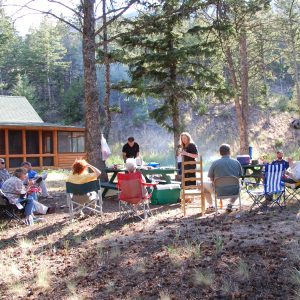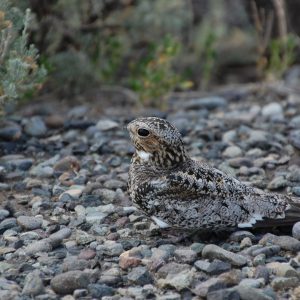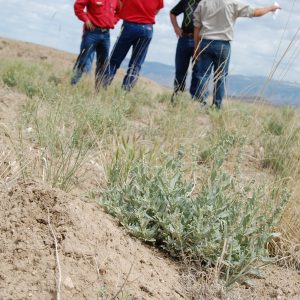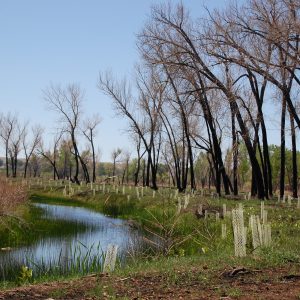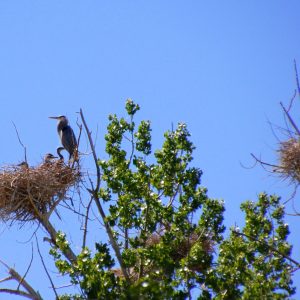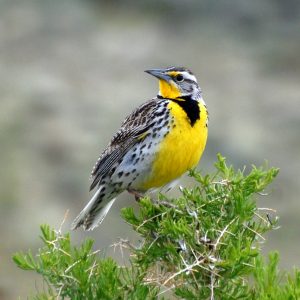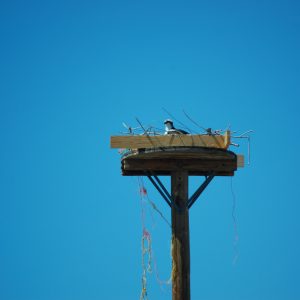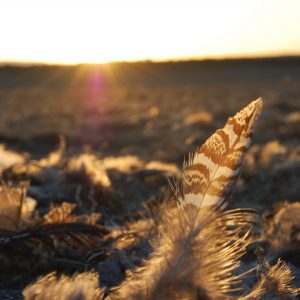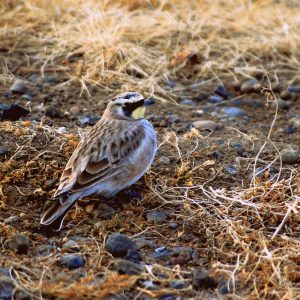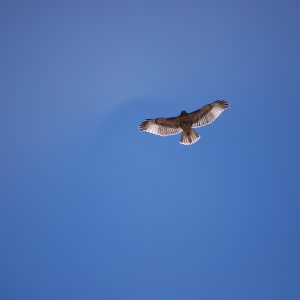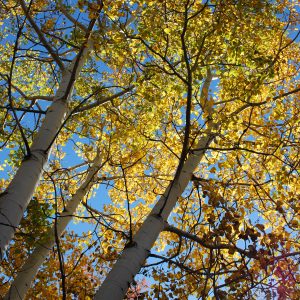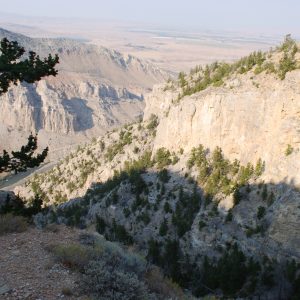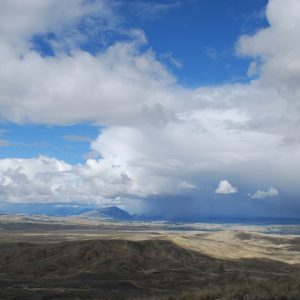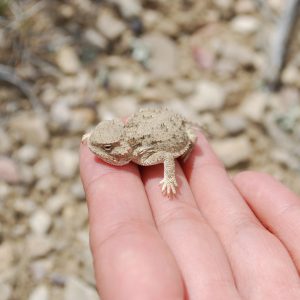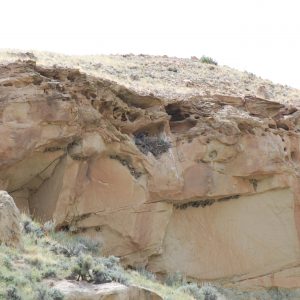-

-
My first work day, alpine glow on the Beartooth Mountains
-

-
The ubiquitous sagebrush
-
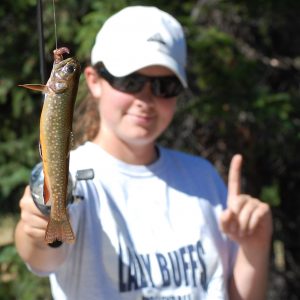
-
Vacation to the Bighorn Mountains; my range technician coworker showing off her brook trout
-
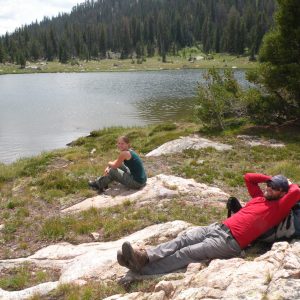
-
Vacation in the Beartooths: my mentor and “alternate intern keeper” chillin’ at our lunch site
I’ve always had a fear of getting stuck in a permanent job, especially one I didn’t like. But since I’ve been working in Cody for just over a year and a half, I feel like I have been working a “real” job, not just an internship. I know the field office, I know the projects, the people, the wildlife, the plants, the tools, how to keep myself busy and prioritize tasks… In short, I know the job. I suppose this is what a “real” job feels like, and it’s not that scary. Granted, my internship has been extended in 5-month chunks, based on funding, which probably eased my phobia of permanency. Nevertheless, if I can approach a new grown-up job with the same confidence that I have when I sit down to my computer in the morning here, turn the key in the ignition of a government-owned vehicle, drive miles out to a remote work site, and accomplish the task I prioritized for myself for the day, I will have no problem taking on a “real” job. New jobs never start out that way, but I know I will get there. I know this because I’ve done it, piece by piece. I have acquired more skills and absorbed more knowledge than I probably even realize, and by putting it all into practice day by day at a job like this, knowing the work is valuable, I have finally acquired the confidence to go with it. I work hard. I am responsible. I can learn new things. I get stuff done. I am employable. These facts will not guarantee me a job, but knowing them does dispel the feelings of inadequacy that usually accompany the thought of getting one.
So now I am facing the last week left of my favorite job, in the coolest place I’ve lived, partaking in some of my favorite activities. It’s sad, but I feel accomplished all the same. It’s going to injure my pride a little if I cry when I leave, but I would bet my breakfast I’m going to do it anyway.
Some of the projects to be wrapped up in order to finish out my internship are: writing up the wildlife section of the Cody Field Office website, gluing and labeling herbarium vouchers, explaining all the GPS points I’ve been collecting and how they go together, and helping my mentor refine the first draft of a paper involving statistical analyses of sage-grouse lek attendance related to vegetation treatments. Guess this next week will be a busy one. I hope that will keep my mind off leaving.
I still remember my first real work day (the one after the introductory meet-the-office day), on May 13, 2011. We left the office sometime during the 4 o’clock hour in the morning to head out to Chapman Bench and count sage-grouse, right at the end of the lekking season. I had never used a spotting scope, seen sage-grouse or smelled sagebrush, and I couldn’t figure out why everything smelled minty when I rolled down the window until I asked my mentor about it. The alpine glow on the Beartooth Mountains was lovely, and I kept taking pictures. Then my mentor drove us up this rather steep, bumpy little two-track onto Polecat Bench, talking casually all the while as I glanced (with mild anxiety) out the back window of the truck. At the GROUND. I am from Nebraska, and had never been in any vehicle traversing this sort of topography. I believed he knew what he was doing, but Phew. This was new.
Sometimes when I encounter situations or environmental conditions that seem a little iffy I think to myself, “what would my mentor do?” Sometimes it’s not worth it to proceed. Sometimes it isn’t as bad as it looked initially, after some cautious evaluation. I appreciate my mentor, he’s a great boss and Wildlife Biologist. Good bosses always make jobs better, and I certainly can’t complain. I also appreciate my “alternate intern keeper,” one of the resident Geologists. And the other friends I’ve made… I will miss them, but I will be back. I couldn’t stay away now. But alas, just for now, it is time to do a little more life stretching. So here goes.



